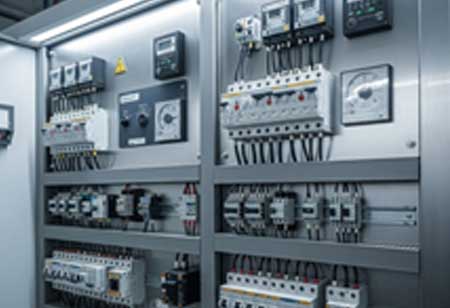Thank you for Subscribing to Electrical Business Review Weekly Brief
I agree We use cookies on this website to enhance your user experience. By clicking any link on this page you are giving your consent for us to set cookies. More info
Understanding and Addressing Common Switchgear Failures
Operators should inspect insulation for signs of wear, conduct dielectric tests, and replace compromised materials promptly.

By
Electrical Business Review | Thursday, August 21, 2025
Stay ahead of the industry with exclusive feature stories on the top companies, expert insights and the latest news delivered straight to your inbox. Subscribe today.
Fremont, CA: Switchgear is vital in electrical systems, providing protection, power distribution control, and ensuring safe operation. However, failures within switchgear can lead to significant equipment damage, costly downtime, and potential safety hazards. By identifying the causes of these failures and implementing practical solutions, we can enhance the reliability and performance of switchgear systems.
Common Causes of Switchgear Failures
One of the primary reasons for switchgear failures is insulation breakdown. Over time, insulation materials can deteriorate due to aging, moisture exposure, or contamination from dirt and dust. To mitigate this risk, operators should regularly inspect insulation for signs of wear and conduct dielectric tests. Proper environmental controls can protect the insulation's integrity, including humidity regulation and dust filtration.
Another prevalent issue stems from contact wear and corrosion. Switchgear relies on electrical contacts to facilitate switching operations and carry current effectively. When these contacts wear down or corrode, they can cause increased resistance, leading to overheating and potential failures.
Routine inspection and maintenance of contacts are essential, along with applying anti-corrosion treatments and replacing worn components. Choosing corrosion-resistant materials like silver-plated contacts can further enhance their durability. Mechanical failures also contribute to switchgear malfunctions. The operating mechanisms and linkages within the switchgear are prone to wear and misalignment.
Factors like inadequate lubrication or debris accumulation can exacerbate these issues, potentially leading to mechanical binding or failure. Regular inspections, proper lubrication, and replacing damaged or misaligned components are crucial in preventing mechanical failures. Adhering to the manufacturer's recommended maintenance schedules can help ensure optimal performance.
Preventative Measures and Best Practices
Circuit breaker malfunctions represent another significant issue causing switchgear failures. Breakers may fail to trip during fault conditions due to stuck mechanisms, improper settings, or worn-out components, resulting in equipment damage and safety risks. To identify these issues early, it is essential to regularly test circuit breakers, verify trip settings, and conduct functional tests. Upgrading to modern, digitally controlled breakers with advanced diagnostics can enhance reliability and support predictive maintenance.
Overheating is another critical concern that can lead to switchgear failure. High temperatures may arise from overloaded circuits, loose connections, insufficient ventilation, damaging components and degrading insulation. Thermal imaging inspections can help identify hotspots and loose connections before they escalate into critical issues. Key measures to prevent overheating include ensuring adequate ventilation, maintaining secure connections, and avoiding circuit overloading.
Environmental factors like moisture, temperature fluctuations, and chemical exposure can also compromise switchgear performance. These elements can accelerate corrosion, degrade materials, and affect mechanical and electrical components. Utilizing enclosures specifically designed for the environment, such as IP-rated or NEMA-rated, can mitigate these risks. Implementing climate control systems like heaters or dehumidifiers protects switchgear against adverse conditions.
The Importance of Maintenance and Training
Improper maintenance practices or a lack of routine maintenance are significant factors in switchgear failures. Neglecting regular inspections can allow minor issues to escalate into major failures. Training personnel on proper maintenance procedures and safety protocols is vital for minimizing human error. While switchgear failures can lead to serious consequences, they are largely preventable. By combining diligent care, advanced monitoring technologies, and adherence to best practices, operators can ensure that switchgear performs optimally, safeguarding both equipment and personnel while reducing downtime and operational disruptions.








